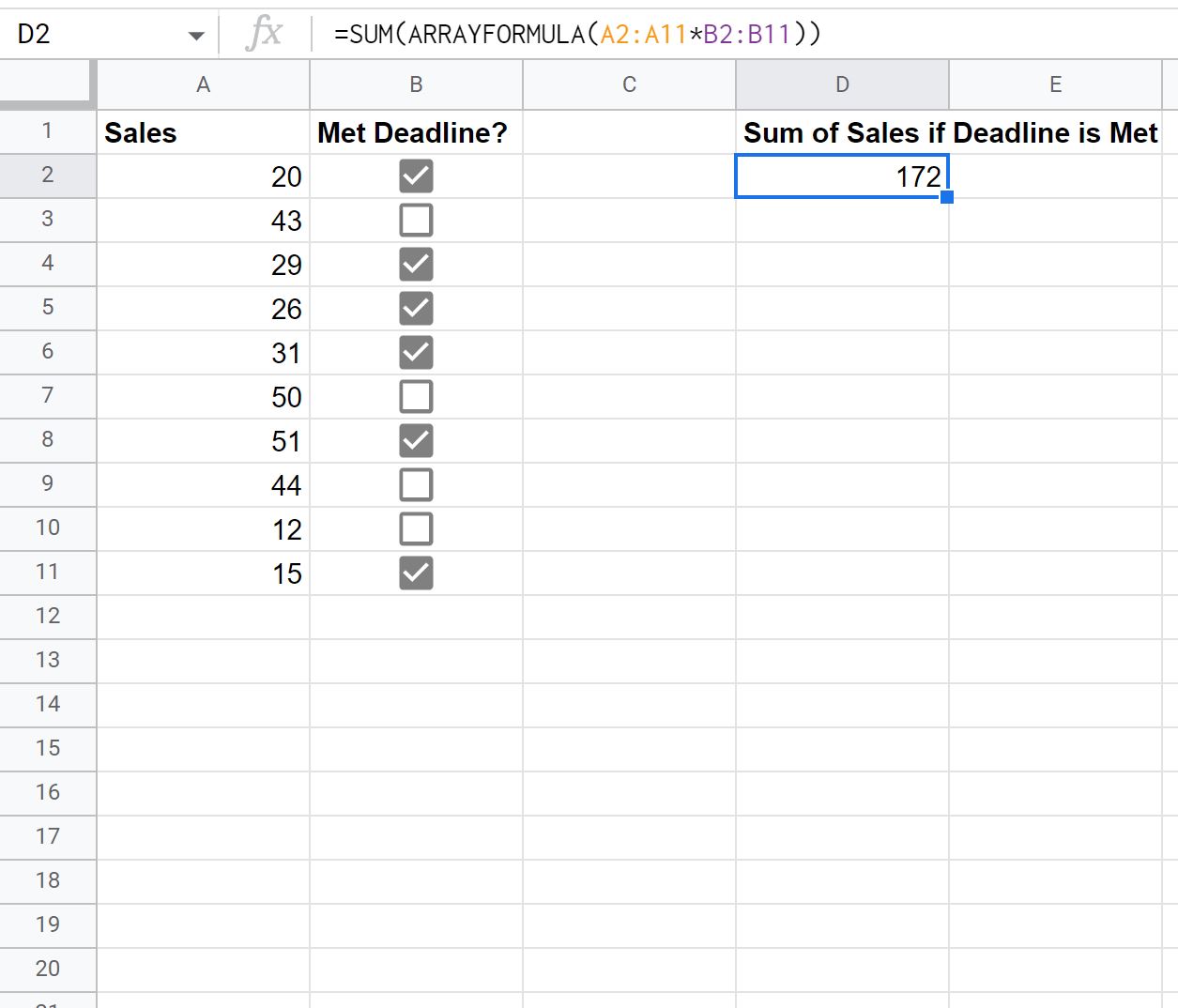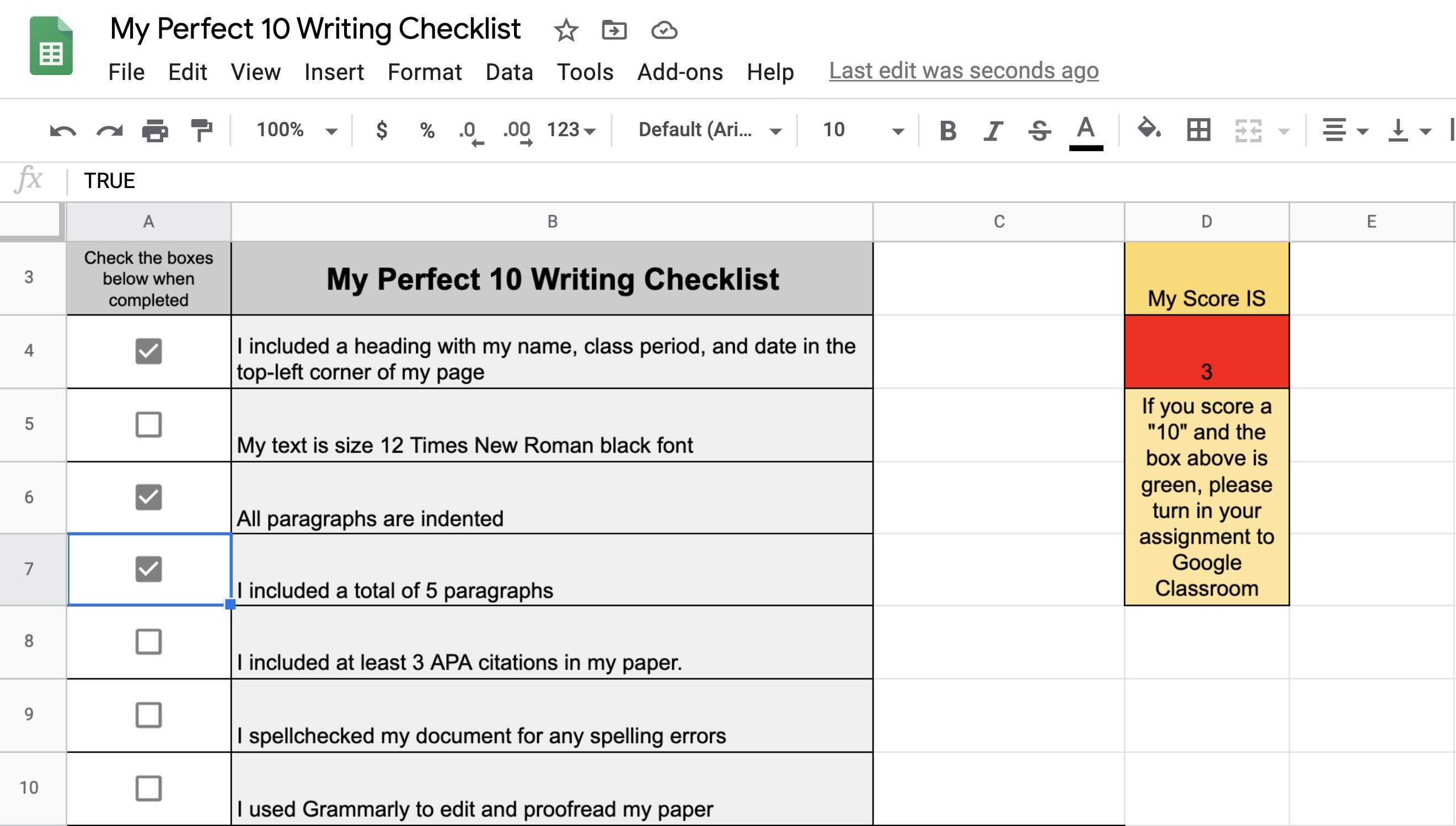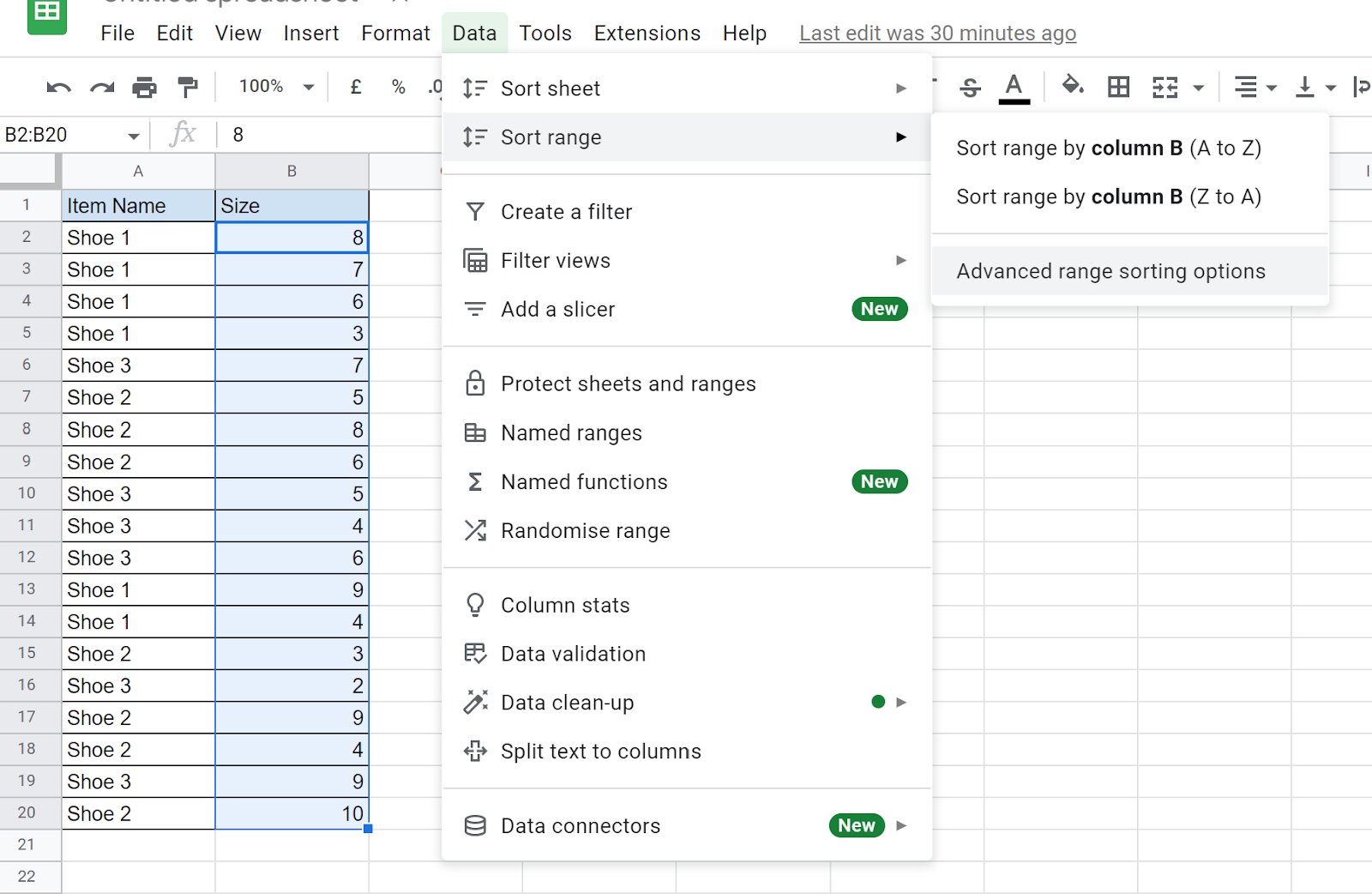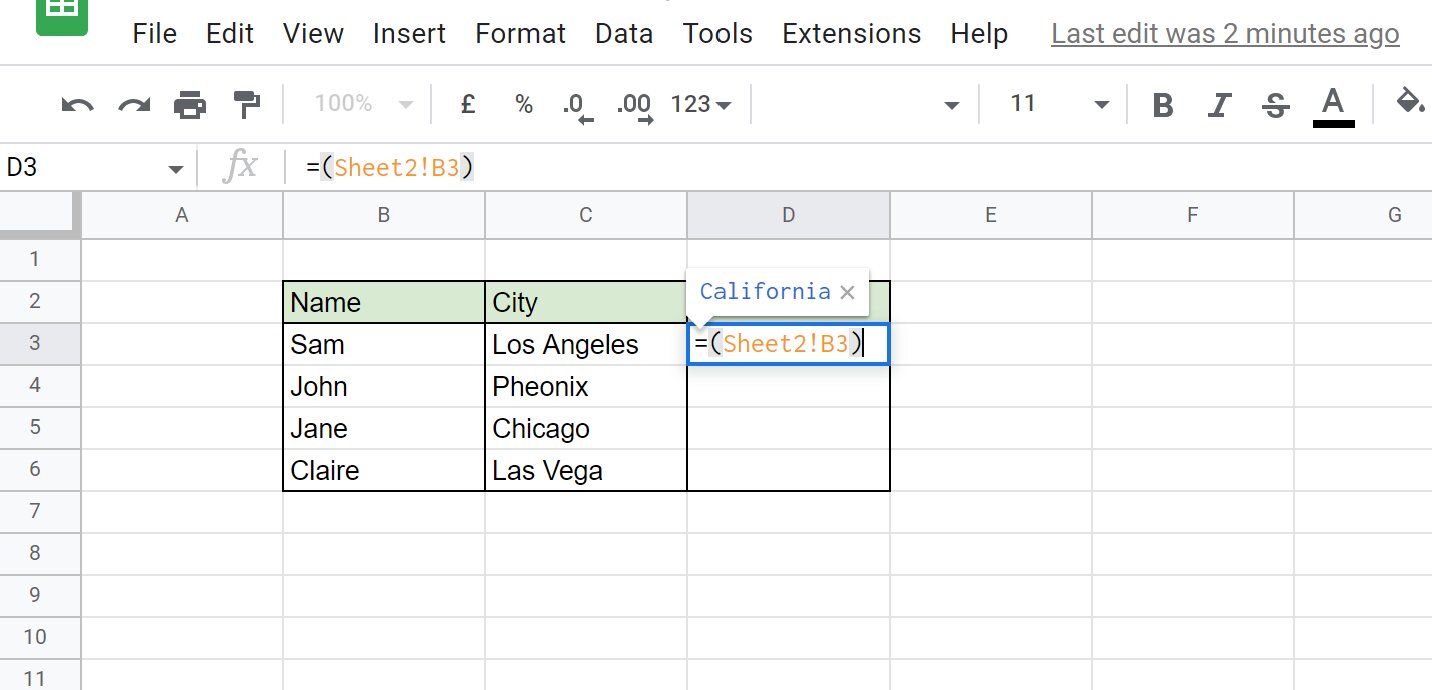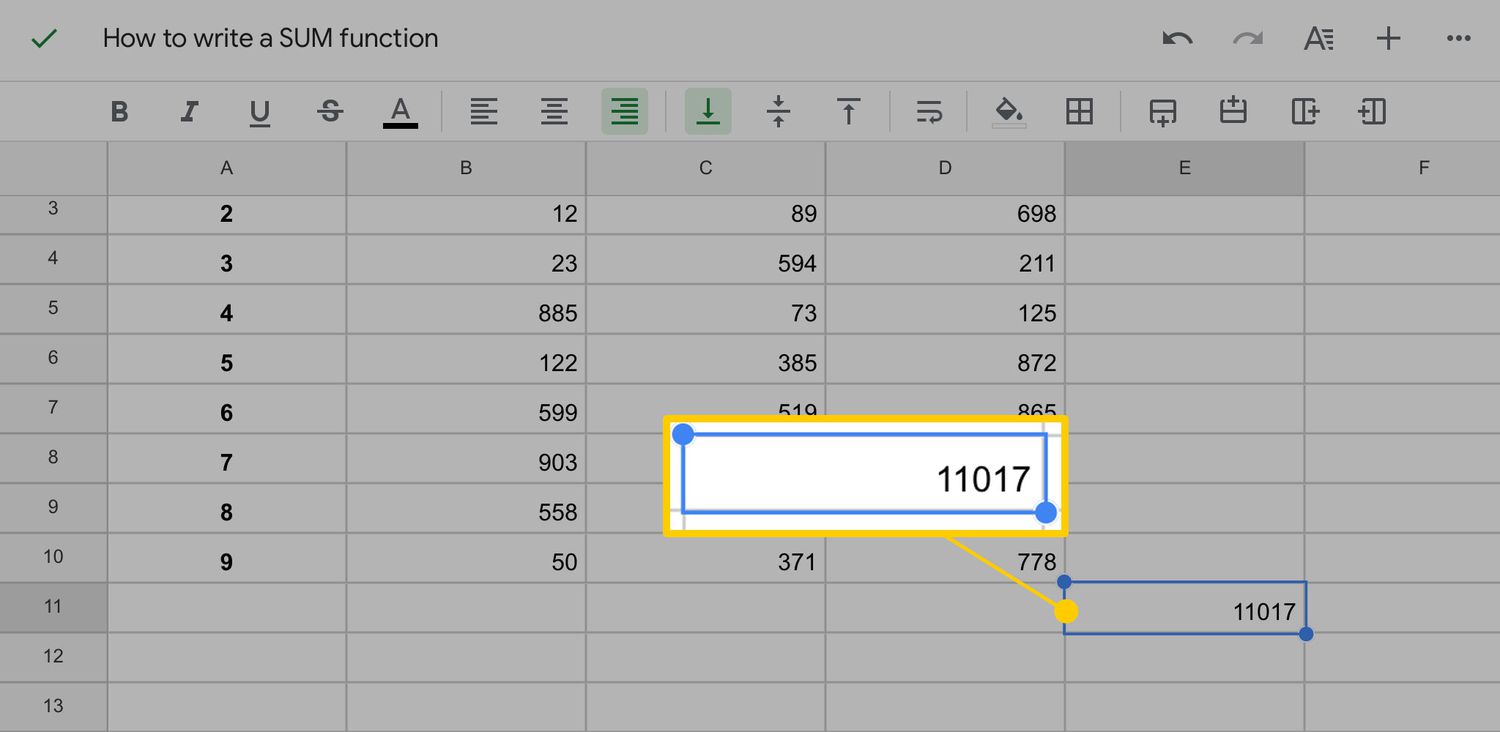Introduction
Welcome to this guide on how to count checkboxes in Google Sheets. Checkbox controls in Google Sheets are a convenient way to collect and analyze data, but counting the number of checked or unchecked boxes may require some additional steps. Fortunately, there are several methods and formulas that can help you achieve this task with ease. Whether you want to count checkboxes in a specific range, across multiple sheets, or even use more advanced techniques like Apps Script, this article will provide you with the necessary knowledge to get the job done.
Counting checkboxes can be useful in various scenarios. For example, you might be managing a project where you need to track the completion status of different tasks. By counting the checked boxes, you can quickly get an overview of how many tasks have been completed. Similarly, counting unchecked boxes can help you identify pending items that require immediate attention. Whether you’re a student, a business professional, or simply someone who uses Google Sheets for personal organization, mastering the art of counting checkboxes can greatly enhance your productivity.
In this guide, we’ll explore different methods to count checkboxes in Google Sheets. We’ll start by examining the formulas available in the application, such as the COUNTIF function and array formulas. Then, we’ll explore more advanced techniques using Apps Script, which allows for automation and customization. Additionally, we’ll cover scenarios where you might want to count checkboxes in specific ranges or across multiple sheets. By the end of this article, you’ll have a comprehensive understanding of how to count checkboxes and apply this knowledge to your own spreadsheet needs.
Finding the Checkbox Formulas
Before we delve into the methods of counting checkboxes in Google Sheets, it’s important to understand the underlying formulas associated with checkboxes. Google Sheets provides two main formulas related to checkboxes: the COUNTIF function and array formulas.
The COUNTIF function allows you to count the number of cells that meet a certain condition. In the case of checkboxes, you can use this function to count how many cells contain a checked box. The formula syntax for counting checked boxes using the COUNTIF function is:
=COUNTIF(range, "TRUE")
The “range” parameter refers to the range of cells where your checkboxes are located. The “TRUE” parameter is the condition you’re searching for, which indicates a checked box. This formula will return the count of checked boxes within the specified range.
The second method of counting checkboxes is by using array formulas. Array formulas allow you to perform calculations on a range of cells and obtain a single result. To count checkboxes using an array formula, you need to enclose the formula within curly brackets and press Ctrl+Shift+Enter after typing it. Here’s an example of an array formula to count checked boxes:
{=SUM(IF(range=TRUE, 1, 0))}
In this formula, the “range” parameter represents the range of cells where your checkboxes are located. The formula will iterate through each cell in the range and check if it contains a “TRUE” value, indicating a checked box. It will then sum up the counts and return the total number of checked boxes.
Now that we’ve covered the basic formulas for counting checkboxes, let’s explore how to use these formulas in different scenarios to achieve the desired results.
Using the COUNTIF Function
The COUNTIF function is a powerful tool for counting checkboxes in Google Sheets. It allows you to specify a condition that must be met in order for a cell to be counted. In the case of checkboxes, the condition will indicate whether the checkbox is checked or not.
To use the COUNTIF function to count checked boxes, follow these steps:
- Select the cell where you want the result to appear.
- Type the formula:
=COUNTIF(range, "TRUE") - Replace “range” with the actual range of cells where your checkboxes are located.
- Press Enter to get the result.
The COUNTIF function will count the number of cells in the specified range that contain a checked box, which is represented by the logical value “TRUE”. The result will be displayed in the cell where you entered the formula.
If you want to count unchecked boxes instead, you can use the formula =COUNTIF(range, "FALSE"). This formula will count the number of cells in the range that do not contain a checked box, as “FALSE” represents an unchecked box.
Using the COUNTIF function offers flexibility in counting checkboxes in Google Sheets. You can apply it to a single column, a row, or even multiple columns and rows. Additionally, you can customize the range based on your specific requirements.
By utilizing the COUNTIF function, you can easily track the number of checked or unchecked boxes in your Google Sheets and gain valuable insights from your data.
Using the Array Formula Method
Another method for counting checkboxes in Google Sheets is by using array formulas. Array formulas allow you to perform calculations on a range of cells and obtain a single result. This method is particularly useful when you want to count checkboxes in a more complex or specific manner.
To count checkboxes using an array formula, follow these steps:
- Select the cell where you want the result to appear.
- Type the formula:
{=SUM(IF(range=TRUE, 1, 0))} - Replace “range” with the actual range of cells where your checkboxes are located.
- Press Ctrl+Shift+Enter instead of just Enter to finalize the array formula.
The array formula will iterate through each cell in the specified range and check if it contains a “TRUE” value, indicating a checked box. If a cell contains a checked box, it will add 1 to the sum. If a cell contains an unchecked box, it will add 0. The final sum will represent the total number of checked boxes in the range.
Using array formulas provides more flexibility in counting checkboxes as compared to the COUNTIF function. You can apply it to multiple ranges, non-contiguous cells, or even apply additional conditions using logical operators like AND or OR.
It’s important to note that when you use array formulas, you need to press Ctrl+Shift+Enter instead of just Enter to finalize the formula. This tells Google Sheets that you’re working with an array formula and not a regular formula. You will notice curly brackets around the formula in the formula bar once it’s entered correctly.
By leveraging the power of array formulas, you can easily count checkboxes in various scenarios and obtain precise results that meet your specific requirements.
Using Apps Script
If you’re looking for even more advanced functionalities and automation when counting checkboxes in Google Sheets, you can turn to Google Apps Script. Apps Script allows you to extend the capabilities of Google Sheets by creating custom scripts and functions.
To count checkboxes using Apps Script, follow these steps:
- Open your Google Sheet and click on “Extensions” in the top menu.
- Select “Apps Script” from the drop-down menu.
- A new Apps Script editor will open in a new tab.
- Write your custom script that counts the checkboxes using JavaScript.
- Save the script and return to your Google Sheet.
- Refresh the page if necessary.
When writing the script, you can use the built-in methods and functions available in JavaScript to loop through the cells, check their values, and count the checkboxes accordingly. For example, you can use a for loop to iterate over the cells in the range and an if statement to check whether each cell contains a checked box or not.
Using Apps Script gives you the ability to create more complex and customized logic for counting checkboxes. You can incorporate conditions, combine multiple ranges, or even trigger the script automatically whenever the spreadsheet updates.
Apps Script also offers the possibility to create custom functions that can be used directly in your Google Sheets formulas. This means you can create a custom function specifically designed for counting checkboxes and use it as a regular formula in your spreadsheet. This approach provides a seamless integration between your custom script and your Google Sheet.
By utilizing the power of Apps Script, you can take your checkbox counting capabilities to the next level and create dynamic, customized solutions that fit your specific needs.
Counting Checked and Unchecked Boxes
When working with checkboxes in Google Sheets, it’s common to have a need to count not only the checked boxes but also the unchecked ones. Fortunately, you can easily adapt the formulas and methods mentioned earlier to count both checked and unchecked boxes.
To count both checked and unchecked boxes, you can use a combination of the COUNTIF function and simple arithmetic:
- Select the cell where you want the result to appear.
- Type the formula:
=COUNTIF(range, "TRUE")to count checked boxes. - Next, type the formula:
=COUNT(range)-COUNTIF(range, "TRUE")to count unchecked boxes. - Replace “range” with the actual range of cells where your checkboxes are located.
- Press Enter to get the results.
The first formula =COUNTIF(range, "TRUE") will count the number of cells in the specified range that contain a checked box. The second formula =COUNT(range)-COUNTIF(range, "TRUE") subtracts the count of checked boxes from the total count of cells in the range to obtain the count of unchecked boxes.
By using these formulas together, you can get a comprehensive count of both checked and unchecked boxes in your Google Sheet, providing a clearer overview of your data.
Additionally, you can use the array formula mentioned earlier to count both checked and unchecked boxes simultaneously. By modifying the array formula to {=SUM(IF(range=TRUE, 1, IF(range=FALSE, 1, 0)))}, you can count both checked and unchecked boxes in a single cell using a custom array formula.
With these techniques, you have the flexibility to easily track and analyze the counts of both checked and unchecked boxes in your Google Sheets, enabling you to gain deeper insights into your data.
Counting Checkboxes in a Specific Range
When working with checkboxes in Google Sheets, you may often need to count the checkboxes within a specific range rather than the entire sheet. Thankfully, Google Sheets offers various methods to count checkboxes within specific ranges, allowing you to narrow down your analysis and obtain more targeted results.
To count checkboxes in a specific range, you can adjust the formulas discussed earlier to include the desired range:
- Select the cell where you want the result to appear.
- Type the formula:
=COUNTIF(range, "TRUE")to count checked boxes within the specified range. - Replace “range” with the actual range of cells where your checkboxes are located.
- Press Enter to get the result.
The COUNTIF function will count the number of cells within the specified range that contain a checked box. By modifying the range parameter, you can count checkboxes within a single column, a row, or a custom range of cells.
In addition to the COUNTIF function, you can also adapt the array formula technique to count checkboxes in a specific range. Simply modify the array formula to {=SUM(IF(range=TRUE, 1, 0))} and replace “range” with the desired range of cells.
By adjusting the formulas to target specific ranges, you can focus your checkbox counts on specific sections of your Google Sheet, allowing for more granular analysis and insights.
It’s worth noting that when specifying a custom range, you can use different methods such as A1 notation (e.g., A1:B10) or named ranges to easily refer to specific areas of your spreadsheet.
With these techniques at your disposal, you have the ability to count checkboxes in specific ranges, tailoring your analysis to specific areas of interest within your Google Sheets.
Counting Checkboxes in Multiple Sheets
Google Sheets allows you to organize your data across multiple sheets within a single spreadsheet. If you have checkboxes spread across different sheets, you may need to count them collectively to get an overall count. Fortunately, Google Sheets provides methods to count checkboxes in multiple sheets, enabling you to consolidate your counts and obtain a comprehensive view of your data.
There are a few ways you can count checkboxes in multiple sheets:
1. Use the COUNTIF function: You can use the COUNTIF function across multiple sheets by referencing the sheet names along with the range of cells. For example, if you have checkboxes in Sheet1 and Sheet2, you can use a formula like =COUNTIF(Sheet1!A1:B10, "TRUE") + COUNTIF(Sheet2!A1:B10, "TRUE") to count the checked boxes in both sheets.
2. Use a combination of IMPORTRANGE and COUNTIF: If your checkboxes are located in different sheets and you prefer a more dynamic approach, you can use the IMPORTRANGE function to import the data from each sheet into a single sheet and then use the COUNTIF function to count the checkboxes. First, use the IMPORTRANGE function to pull the checkboxes’ values from each sheet into a designated range in a master sheet. Then, apply the COUNTIF function to count the checkboxes in the master sheet.
3. Create a custom Apps Script: Utilizing Google Apps Script, you can write a custom script that loops through the different sheets in your spreadsheet, counts the checkboxes, and provides you with the overall count. This approach gives you more flexibility and control over the counting process, allowing you to perform additional operations or customization if needed.
By utilizing any of these methods, you can effectively count checkboxes in multiple sheets and consolidate the counts into one location. This enables you to gain a comprehensive understanding of the overall checkbox count across different parts of your Google Sheets spreadsheet.
Conclusion
Counting checkboxes in Google Sheets is a valuable skill that allows you to efficiently analyze and track data. Whether you need to count checked or unchecked boxes, count checkboxes in specific ranges, or count checkboxes across multiple sheets, there are various methods and formulas at your disposal.
The COUNTIF function serves as a handy tool for counting checkboxes, offering flexibility and simplicity. You can easily adapt the formula according to your specific criteria and obtain accurate results. Moreover, array formulas offer more advanced functionalities, providing you with greater control over complex counting scenarios.
If you require more customized or automated solutions, Google Apps Script empowers you to create your own scripts and functions. This enables you to tailor your checkbox counting process, integrate it with other calculations, or even trigger it based on specific events or updates.
Remember, the ability to count checkboxes in Google Sheets can be utilized in various contexts, whether you’re managing projects, tracking tasks, or organizing data. By effectively leveraging these counting techniques, you can gain valuable insights, make informed decisions, and enhance your productivity.
So go ahead and start exploring the methods outlined in this guide. Experiment with different formulas, embrace Apps Script if needed, and tailor your counting approach to suit your specific requirements. With practice, you’ll become proficient in counting checkboxes in Google Sheets, unlocking the full potential of your data management and analysis tasks.







